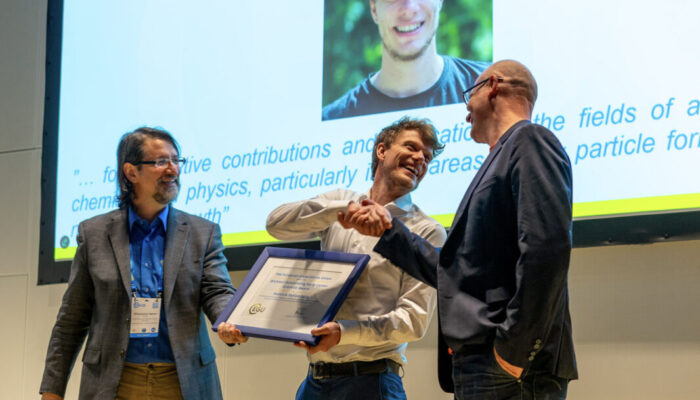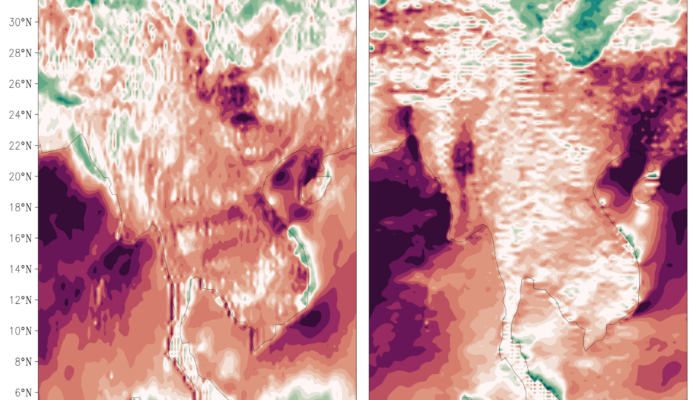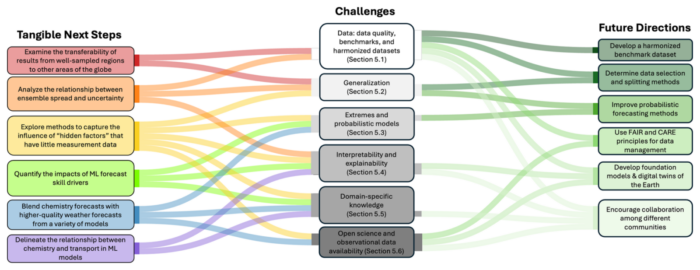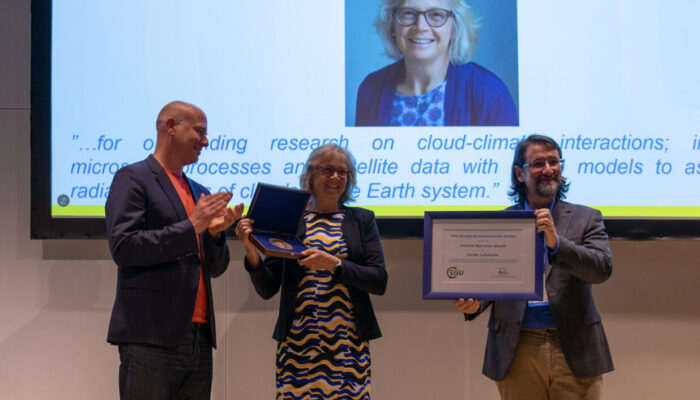Dr. Dominik Stolzenburg is a chemist in atmospheric physics at TU Wien, specializing in aerosol science and air quality. His work focuses on how ultrafine particles form, transform, and affect both climate systems and human health — especially in cities. Through field measurements, modeling, and data analysis, he explores how human and natural emissions interact, helping policymakers shape cleaner ...[Read More]
Have you ever seen a weather forecast map that looked like it was wearing a striped sweater?
This isn’t a new fashion trend in meteorology. For model developers, these unexpected stripes are a sign that something has gone wrong in the complex digital engine that powers our forecasts. Recently, our team at CMA Earth System Modeling and Prediction Centre (CEMC) encountered these very stripes in wind forecasts produced by an operational global model. We played the role of scientific de ...[Read More]
Harnessing Machine Learning to Advance Tropospheric Ozone Science
Machine learning (ML) and Artificial Intelligence (AI) offer powerful tools to address long-standing scientific challenges. At the molecular scale, we’ve seen projects like AlphaFold discover unknown protein structures and how they might interact with other molecules. At the planetary scale, ML-driven models like GraphCast (Google), AIFS (ECMWF) and ACE (Allen Institute for AI) are revolutionizin ...[Read More]
“You Can’t Get Around Clouds”: A Conversation with Climate Scientist Ulrike Lohmann
Prof. Dr. Ulrike Lohmann is a leading atmospheric physicist and climate scientist at ETH Zurich’s Institute for Atmospheric and Climate Science, renowned for her pioneering work on clouds, aerosols, and their interactions within the Earth’s climate system. Her research has significantly advanced our understanding of how microscopic particles influence cloud formation and, in turn, the global ...[Read More]
Nitrogen dioxide disparities in the time of COVID-19: How satellite data can facilitate environmental justice studies during this natural experiment and beyond
Around the world, the most vulnerable, marginalized, and racialized are disproportionately impacted by a variety of environmental stressors such as extreme heat, health-harming air pollution, and the growing impacts of climate change. In the United States, research has uncovered how Black and Brown communities and those with lower socioeconomic status are exposed to higher concentrations of many a ...[Read More]
Crowdsourcing air quality management data from: A pilot study in India
India is experiencing an “Air apocalypse” and the Global Burden of Disease study has estimated the death toll has reached 1.67 million in 2019. Almost 100% of the population is now exposed to PM2.5 level higher than WHO (World Health Organization) recommendations. However, common citizens are generally unaware of the seriously damaging effects of poor air quality, largely because of the lack of ad ...[Read More]
Parenting in Academia: Challenges and Perspectives
Trying to juggle teaching, advising, publishing, finding a new (or permanent) job, relocating, attending conferences, and actually doing research sometimes requires more hours in the day than exist (oh and that global pandemic situation is sticking around). Additionally, many scientists have children or are starting a family at the same time as maintaining and building a career. In this week’s blo ...[Read More]
Face masks effectively limit the probability of SARS-CoV-2 transmission
Face masks have been widely advocated to mitigate the airborne transmission of viruses including the severe acute respiratory syndrome coronavirus 2 (SARS-CoV-2) (e.g., Lelieveld et al., 2020). They can reduce the emission and spread of respiratory viruses through airborne droplets and aerosols as well as the inhalation of airborne viruses. The effectiveness of masks, however, is still under debat ...[Read More]
What can we do to improve gender diversity in the workplace?
The number of women in science and academia drops with each career step in the fields of science, technology, engineering and mathematics (STEM fields). This systematic under-representation of women towards the top of the academic career path is called the “leaky pipeline”. In Germany about 50% of the students in mathematics and natural sciences are women, but there are only 20% of fem ...[Read More]
February 2021: A dusty month for Europe
In February 2021, two major Saharan dust events hit Europe. Because of the prevailing weather conditions in the first and last week of February, several million tons of Saharan dust blanketed the skies from the Mediterranean Sea all the way to Scandinavia. The sandy sky was observed almost everywhere in Europe (Fig. 1). Moreover, the stained cars and windows indicated the dust deposition (Fig. 2 – ...[Read More]





